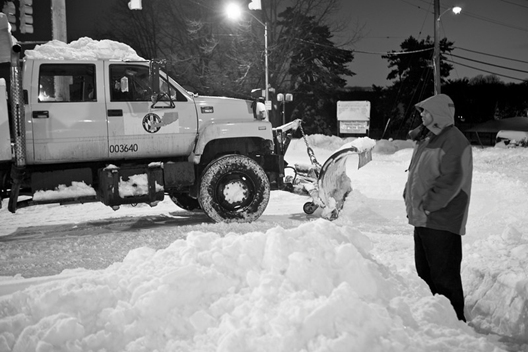
Before a Winter Storm
- Have extra blankets on hand.
- Ensure that each member of your household has a warm coat, gloves or mittens, hat, and water-resistant boots.
During a Winter Storm
- Stay indoors during the storm.
- If you must go outside, several layers of lightweight clothing will keep you warmer than a single heavy coat. Gloves (or mittens) and a hat will prevent loss of body heat. Cover your mouth to protect your lungs.
- Walk carefully on snowy, icy, sidewalks.
- Avoid traveling by car in a storm
- Carry an emergency kit in your car.
- Keep your car's gas tank full for emergency use and to keep the fuel line from freezing.
- Let someone know your destination, your route, and when you expect to arrive. If your car gets stuck along the way, help can be sent along your predetermined route.
If You Do Get Stuck...
- Stay with your car. Do not try to walk to safety.
- Tie a brightly colored cloth (preferably red) to the antenna for rescuers to see.
- Start the car and use the heater for about 10 minutes every hour. Keep the exhaust pipe clear so fumes won't back up in the car.
- Leave the overhead light on when the engine is running so that you can be seen.
- As you sit, keep moving your arms and legs to keep blood circulating and to stay warm.
- Keep one window away from the blowing wind slightly open to let in air.
What to Do After a Winter Storm
- If you shovel snow, be extremely careful. Take frequent breaks. Avoid overexertion.
- Continue listening to local radio or television stations or a NOAA Weather Radio for updated information and instructions. Access may be limited to some parts of the community, or roads may be blocked.
- Help a neighbor who may require special assistance--infants, elderly people, and people with disabilities. Elderly people and people with disabilities may require additional assistance. People who care for them or who have large families may need additional assistance in emergency situations.
- Avoid driving and other travel until conditions have improved. Roads may be blocked by snow or emergency vehicles.
- Follow forecasts and be prepared when venturing outside. Major winter storms are often followed by even colder conditions.
For information about historic winter storms in Baltimore, click here


